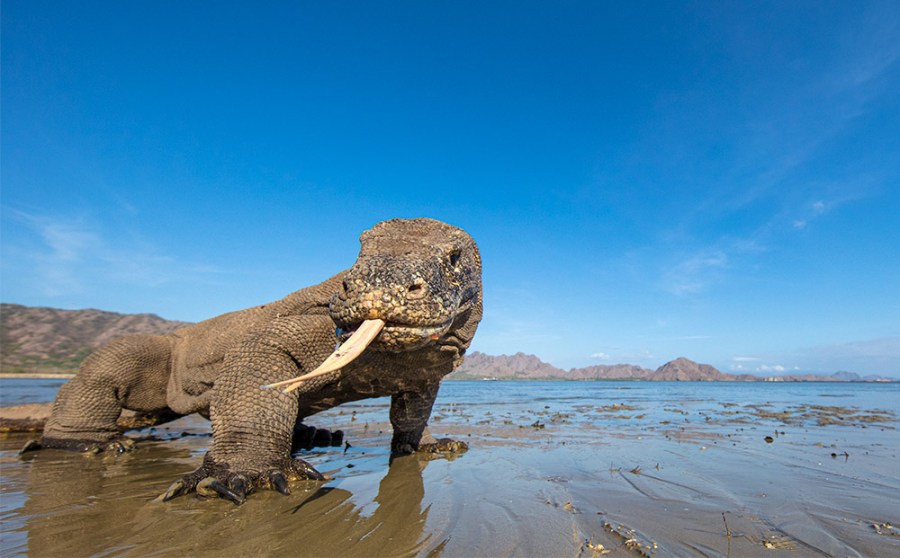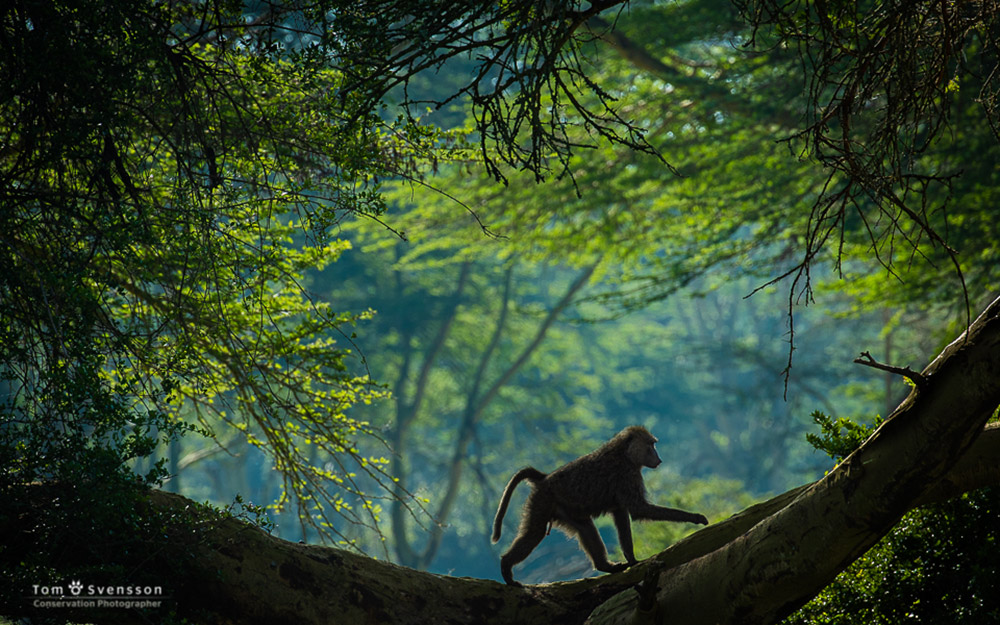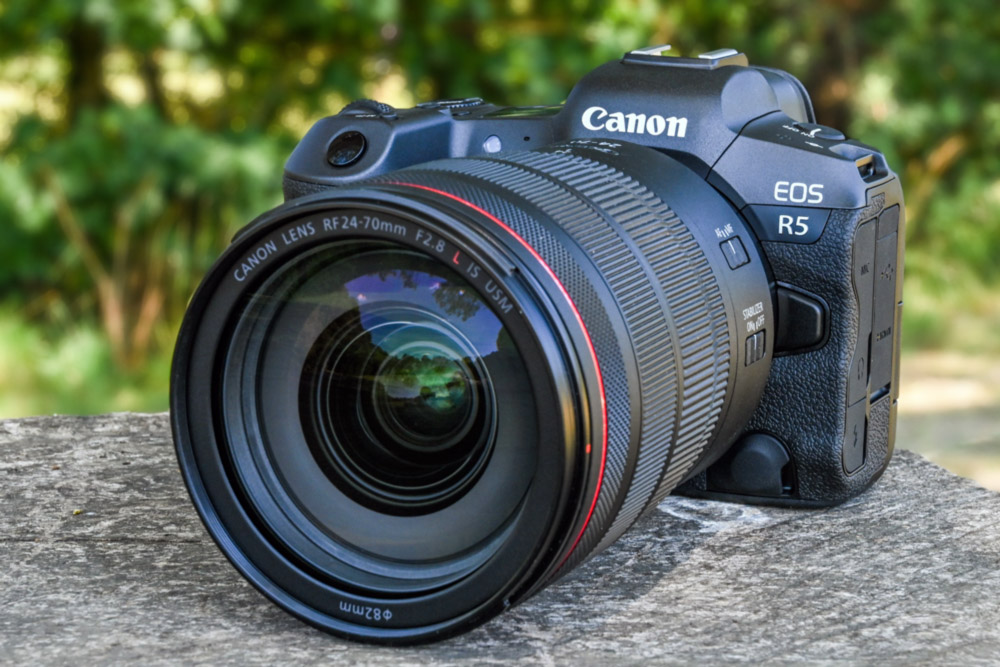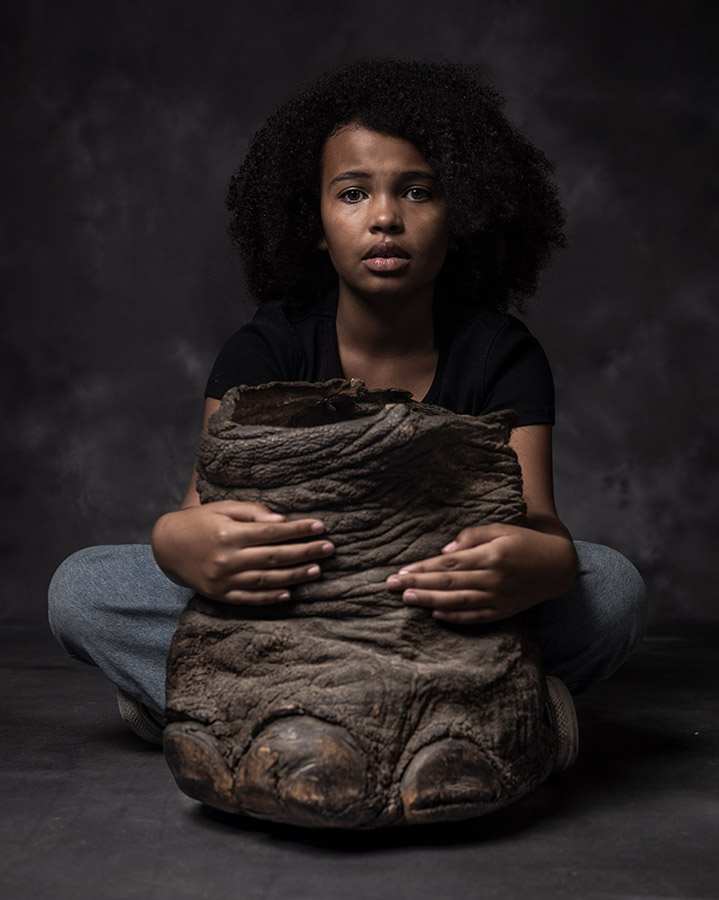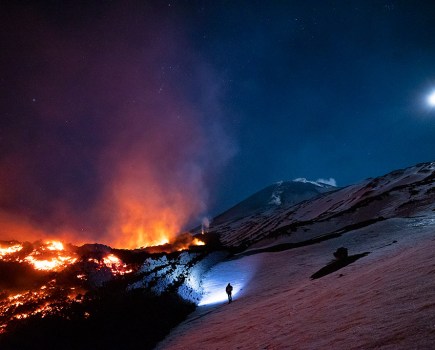Tourism is our best hope for saving the natural world and its endangered wildlife. Leading conservation photographer Tom Svensson tells AP more…
Tom’s background in wildlife conservation
Tom Svensson does not consider himself a wildlife photographer. Although he photographs wildlife for a living, and is internationally renowned for it. He describes himself as a conservation photojournalist. Few of his images end up as framed prints on anyone’s wall. ‘My main work is conservation, and photography is just my way of getting the information out there,’ admits the Dane, who lives in Sweden when he isn’t travelling.
‘Most of my work is very dark. I work a lot with the illegal wildlife trade and follow the blood trail from the killing of the rhino in Africa, for example, all the way to Asia, where the market for most of it ends up.’
Some of the stories that Tom shares of his brushes with criminal gangs, warlords and officials in despotic dictatorships are, frankly, terrifying. He has been followed, threatened, chased and even kidnapped. He has had guns pointed at him, and there are places he can no longer go because he would probably be killed.
On the plus side his job takes him to some of the most beautiful parts of the world and brings him into close proximity with the most incredible wildlife. So inevitably he has an impressive portfolio of more-traditionally picturesque wildlife images that celebrate the wonders of the natural world.
Like many photographers of wildlife Tom originally studied as a zoologist. Then went on to work for a conservation charity. ‘I first picked up a friend’s camera to record the work we were doing with the NGO on saving mammals,’ he recalls, ‘and from there on things progressed rapidly. Then Canon found my work about ten years ago and invited me to become an ambassador.
I was their first to come from a conservation journalism background, rather than being a straight wildlife photographer. I agreed to work with them on the condition that they put out the kind of work I was doing. Which at that time was quite hard-hitting, and in hindsight rather too bloody, I think.
When I was new to photography I desperately wanted a strong reaction from people and the first lectures I did, people in the audience were crying. But the risk of that strategy is that people shut down, so in the end when you’re presenting the solutions they have stopped listening. And getting through to people is what my work is all about.’
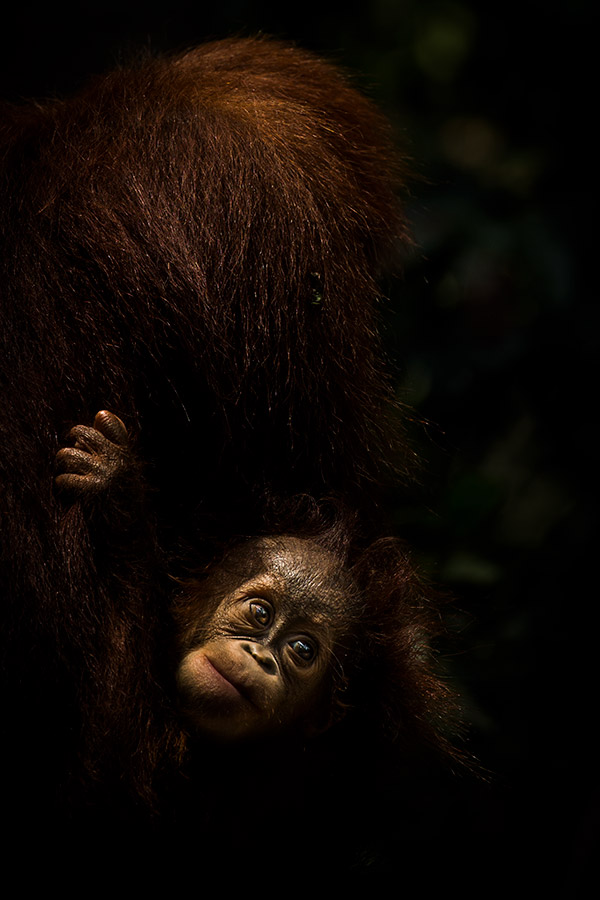
An orangutan mother and baby, photographed in Kalimanta, Borneo. Canon EOS-1D X Mark II,
24-70mm. Image credit: Tom Svensson
Problems today
Tom’s job affords him the opportunity of seeing first-hand what is happening to the world, and the desire to do something about it is what motivates him to keep going, despite the personal risks to himself.
‘The biggest problem facing the world today is the concentration of money and power in the hands of bad people,’ he says. ‘To stand against them and their interests can actually be very dangerous. If you’re on the good side your chances of getting killed are rather high at the moment. There are some countries that I can’t go to now because I’m too well known and it would not be safe.
‘Myannmar and Laos are the two worst places in the world for the illegal wildlife trade. There’s a town in Myanmar on the Chinese border which is run by a warlord and has its own army. It is a hub for this trade, selling to the Chinese market, and China turns a blind eye. If they wanted to, China has the power to end the illegal wildlife trade in one day but there isn’t the will.’
Despite the danger, Tom insists that he is not an adrenaline junkie. ‘I’m extremely well prepared and calculated. And I have a big advantage of having a military background so I know how to behave in bad situations.’
Problems facing wildlife
It would be easy to become despondent and feel hopeless at the scale of the world’s destruction but perhaps surprisingly Tom remains optimistic. ‘If I didn’t think we can change things I wouldn’t do it,’ he insists. ‘I’m 100% sure we can. The two biggest problems facing wildlife right now are habitat loss and biodiversity – by which I also include climate change, because the two go hand in hand.’ Indonesia is an example of this.
‘It is an amazing part of the world, but also a very sad part of the world because the destruction of it is happening very rapidly,’ he says. ‘When I was there recently they were burning 2.2 million hectares. That is the size of the entire Kruger National Park in South Africa. And that is just one year’s burning. About 90% of it is for the palm oil industry.
The most sickening part of it is that in Indonesia you are not allowed to cultivate what is called primary rainforest [untouched, pristine forest that exists in its original condition]. But primary forest becomes secondary as soon as it has been burned by fire. So what does everyone do? Including the big western multinational companies? And then you get the ridiculous discussion about ‘sustainable palm oil’. There is no such thing as sustainable palm oil. The certification body is run by the companies themselves, backed by friendly NGOs.’
Tom has a disdain for certain well-known conservation charities that are more interested in making money than in saving the world. ‘There are a lot of bad NGOs out there that don’t do shit apart from collect money,’ he says. ‘They have slick websites, but when you start digging to see what they have really done for conservation you find that they have achieved very little. I’m currently working with a really good NGO called World Animal Protection, doing investigative photojournalism.’
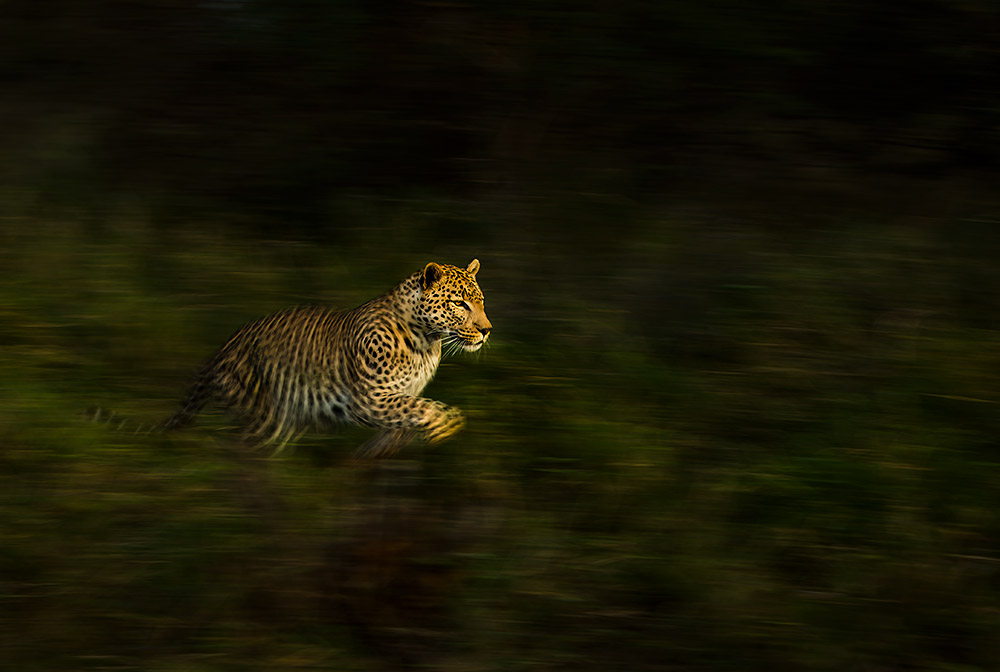
Tom captured this leopard in Greater Kruger, South Africa. Canon EOS-1D Mark IV, 200mm f/2.8. Image credit: Tom Svensson
Tourism and wildlife conservation
‘The solutions to these issues are complex,’ says Tom, and he is exasperated at the over-simplification of the issues and solutions from some sections of the media, especially when it comes to travel. ‘Tourism is a paradox. It is one of the biggest causes of climate change, but it’s also the best hope for saving most of the world’s wildlife.
A lot of the big countries in Africa, for example, have realised that if they lose their tourism, which is based on nature, their GDP is gone. We need to get to a point where the whole world realises that nature is more valuable alive than dead. Where it is more profitable to preserve wildlife than destroy it. If wildlife no longer has any commercial value I fear it will be gone. The best way to create that value is responsible eco-tourism.
So it’s simplistic of some environmentalists to point a finger at flying. If you look at the total amount of CO2 in the air and how much of it comes from aviation you’d be surprised at how little it is [*It is around 2.5%]. There are many things that create a much bigger impact that we should focus on.’

Caged monkey photographed at Mong La, Burma. Canon EOS 5D Mark II, 24-70mm. Image credit: Tom Svensson
Photography trips and holidays
Indeed, when he isn’t gathering evidence of wildlife’s destruction Tom spends a lot of the year doing his bit for wildlife tourism. Including leading photographic holidays with AP’s travel partner Zoom Photo Tours to some of the world’s most awe-inspiring destinations. (See below for upcoming vacation details).
‘Photography trips are what I do for relaxation. I enjoy them because I get to show people the beautiful places of the world that I love, and what we stand to lose if we don’t act. And if I can help one person get to the next step in their photography development that’s enormously satisfying for me, too.’
Tom’s two-pronged approach to conservation works for him. His hard-hitting photojournalism exposes the crimes and abuses being inflicted on the world’s wildlife and habitats. Then his holidays contribute to the wildlife economy of those countries and help show that there are better ways to profit from these beautiful animals and wild spaces than by destroying them.
Tom’s equipment for wildlife conservation photography
- Canon EOS R3
- Canon EOS R5
- RF 24-105mm f/4
- RF 70-200mm f/8
- RF 100-500mm f/4.5-7.1
- RF 11-24mm (next purchase)
Tom is a Canon and Gitzo ambassador and went mirrorless in 2021. ‘When Canon introduced the EOS R I tried it but wasn’t too impressed,’ he confesses. ‘But when the R5 came out I realised that it was a much better camera even than my EOS-1D X Mark III. For me it was such a big difference, the AF was so superior. I also tried the RF 100-500mm.
I used to use the 200-400mm, with the built-in converter, on my 1D X Mark III, which is something like £12,000. Then Canon comes along with this smaller lens that is less than half the weight and costs under £3,000. I couldn’t see a difference in image quality. So right there and then I decided to sell all my DSLR kit and go mirrorless. I switched very quickly. Then the R3 came out and that’s amazing. There isn’t another camera today that can do what the R3 can do.
See our pick of the Best Canon RF Mount Lenses and Canon mirrorless cameras.
Thoughts on mirrorless
‘These new mirrorless cameras are extraordinary. We’re getting shots now that it was impossible to take before. There used to be an art to photographing flying birds, it was very difficult. Now it’s almost effortless. The ISO values on these new mirrorless cameras is so much better now too. I’ve gone up as high as ISO 32,000. This means that if I’m using a lens with a maximum aperture of f/6.3 it doesn’t matter. I tried the 800mm f/11 and I was impressed. People are making a big fuss online about how a lens with an aperture of f/11 is no good. But they are wrong.
‘The problem with these modern cameras is that they are much more difficult for the beginner to learn to use. They are basically now very advanced computers and if you put in the wrong settings they won’t work for you they will work against you. The threshold to become proficient with these modern cameras is now much higher than it used to be and there is such a steep learning curve.
‘One of the most common questions I get is “how do you get pictures like that when I can’t even get mine in focus?”. And I say well that’s because you’re not using the right settings. Then I show them what settings to use and it all falls into place. Canon sent me an internal book on the focusing system and it was about 300 pages. And that was just on the AF!’
Seeing the light
As a Canon ambassador Tom takes his role as a teacher and mentor to those who attend his holidays very seriously. He enjoys helping photographers to see the light – sometimes literally. ‘Photography is mostly about learning to see light, and being able to read it. I had a lady on one of my trips who just couldn’t see the light. I worked and worked with her and then suddenly she saw it. She went out and took a picture she was so proud of that she started crying. That is one of the strongest memories I have. And the lady has a big print of that photo above her sofa.’
Join Tom Svensson and Nigel Atherton in South Africa!
In May 2023, Tom is teaming up with AP Editor Nigel Atherton for a trip to South Africa, where guests will not only get to photograph the ‘big five’ wildlife subjects but also penguins and great white sharks, as well as spending time in Cape Town, one of the world’s greatest cities. Africa has a special place in Tom’s heart. ‘I’ve been to every continent and they are all fascinating in their own way but I’ve got the Africa bug,’ he confesses. ‘Once you’ve got it you can’t get rid of it. You will want to keep going back again and again.’
Tom has been to South Africa many times, and is excited to be leading a trip there for AP. ‘Standing on the Cape looking down at that beautiful coastline with the lush green mountains is an unforgettable feeling,’ he says. ‘We’ll visit two Cape vineyards and sample their delicious wines. And get the opportunity to photograph an incredible variety of wildlife. We’ll see seals, penguins and great white sharks off the Cape. Then we’ll head inland to a nature reserve to photograph elephants, lions, rhino, leopards and buffalo – and other wildlife such as the impala. If you haven’t been to Africa you really must go – but prepare to catch the Africa bug too!’
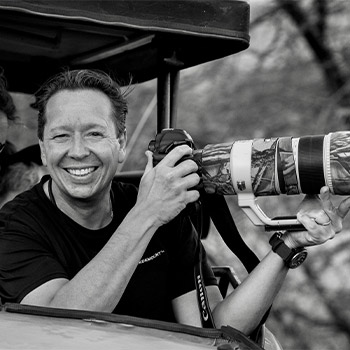
Join Tom in Indonesia with Tesni Ward
In October 2023, Tom is also joining Tesni Ward on an AP photo trip to Indonesia. ‘On that trip we will take a boat up into the rainforest of Kalimantan, which is absolutely amazing,’ Tom enthuses. ‘It’s a great feeling, being deep in the jungle surrounded by birds and monkeys. And the orangutans are fascinating. We’ll also snorkel with giant manta rays before heading to see one of my favourite subjects, the komodo dragon. The closest living thing we have to dinosaurs. They are absolutely enormous and very dangerous. They look so docile but you should see how fast they run!’
For more details on AP photography holidays and vacations click here.
Whether you’re new to wildlife and nature photography or looking to improve your skills, take a look at our Wildlife Photography guides and features.
More reading:
Sebastião Salgado’s new book: Amazônia
Shining a new light on endangered species
Tim Flach’s new book documents weird and wonderful endangered species

